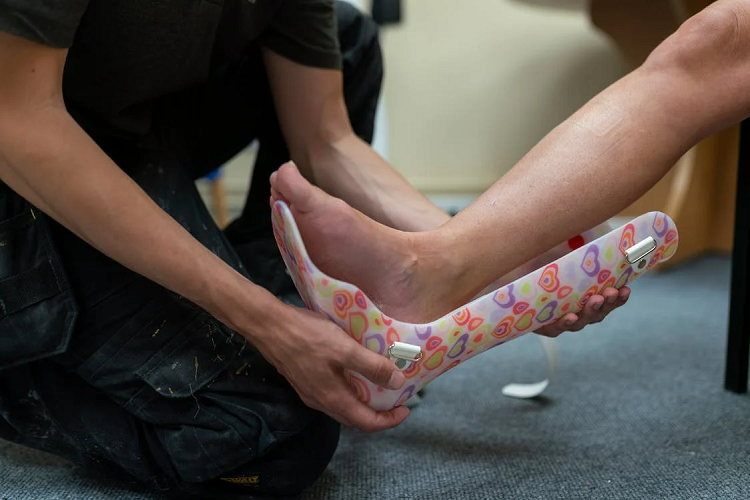If you’ve ever suffered from joint pain or weakness, you know how frustrating it can be. The discomfort can make it difficult to get through a normal day. And if the problem persists, it can start to affect other aspects of your life too.
For instance, you might find that your symptoms limit your ability to participate in sports or hobbies you used to enjoy. Orthotics are medical devices that help reduce or relieve foot and ankle pain by stabilizing and aligning the joints within the lower leg.
This article discusses seven tips for selecting the right orthotics for you. Keep reading to learn more about this topic and how an orthotic could help resolve your pain problems.
Know the Basics of Orthotics
When you’re in pain, it’s easy to ignore the basic facts about your condition and the treatment options available to you. This can make choosing an orthotic more challenging. However, understanding the basics of orthotics can help you make the best choice for your situation.
First, know what type of orthotic you need and your goal for using it. Orthotics can be used to treat a wide range of conditions. The two most common conditions orthotics are used to treat are arthritis and injuries.
Arthritis is a general term for conditions that cause inflammation. Examples of arthritis include rheumatoid arthritis, osteoarthritis, and inflammatory joint diseases. In these cases, orthotics may reduce pain, decrease inflammation, increase the range of motion, or improve function.
Traumatic injuries to the joints can cause chronic pain and loss of range of motion. Orthotics can be used to help treat low back pain, knee pain, and ankle pain resulting from these injuries.

Measure Your Feet and Ankles
Most orthotics are designed based on a patient’s feet and ankles. To start, you’ll need to verify your foot and ankle measurements. While it’s okay if you don’t have accurate measurements, you should be able to get them reasonably close. If you’re in a hurry to select an orthotic, you can get a rough estimate based on your shoe size.
However, this is likely to be inaccurate. This is because your feet may change size over time, especially as you age, you should get your feet and ankle measurements whenever possible.
An accurate foot measurement is critical to receiving the most benefit from orthotics.
In general, orthotics need to be cut to fit the foot and ankle exactly. This will ensure the right amount of pressure is applied to the joint.
Consult a Professional When You’re In Pain
If you’ve been using orthotics and experiencing pain, it’s important to get a professional assessment. An orthotic that’s too large or too small could be causing your pain. An orthotic that’s too narrow can limit your range of motion.
While an orthotic that’s too wide can put too much pressure on your joints. You should visit your doctor or podiatrist if you’ve been using orthotics for several months with no significant pain relief.
An orthotic that’s too small or too wide can be a sign of an underlying condition. With that being said, custom orthotics are the best option instead of buying one over-the-counter to prevent these problems.
Choose an Orthotic Made From Heel Stabilizers
A good orthotic will have a base made from heel stabilizers. These are the pads found on the bottom of the shoe. Heel stabilizers help keep your ankle from rolling inwards or outward. Rolled ankles can cause pain, inflammation, and limited motion.
It’s important to choose an orthotic with a heel stabilizer that’s attached to the bottom of your shoe. This will ensure the orthotic is being worn correctly. You also want to make sure the heel stabilizer is attached to the bottom of the shoe. This will prevent the foot from sliding forward too much.
Select an Orthotic Made From Supports
Some orthotics are made from a combination of heel stabilizers and foot supports. These orthotics are designed to provide additional support to weak joints. Foot supports can be found in a number of types of shoes.
They’re usually made from a lightweight material and are inserted between the sole of the shoe and the foot. The foot supports provide additional support to a number of joints. These include the ankle, the knees, the hips, and the back.
Select an Orthotic With the Correct Cuff Length
As with any medical device, it’s important to select an orthotic with the right cuff length. This length depends on how long your fingers are. The cuff length should be slightly longer than your fingers.
This will ensure the orthotic doesn’t come too close to your skin and is securely placed. If your orthotic is too short, you may experience increased skin irritation. This can lead to an increased risk of skin tags and bacterial infections.

Take Advantage of the Digital Orthotics Apps
Many orthotics come with apps that can track your progress and help you to stay motivated to continue using them. For example, you can set goals for how long you want to replace your orthotics each day. You can also share your progress with friends or family members.
Additionally, many orthotics come with fitness apps that can help you to build strength and endurance while using your orthotics. This can help you to get out of your wheelchair more easily, which can help to improve your quality of life.
Summing Up
You don’t need to suffer from painful feet or ankles. This is especially true if you have the right information and the correct orthotic for your condition. Orthotics can help improve joint function and relieve pain. Not to mention, they can help avoid painful injuries and even help such as osteoporosis, arthritis, sports injuries, and more.
The key is to select the right orthotic for your pain and your condition. This can be challenging. This is why it is important to understand the basics of orthotics and how they can individually help you.
 HammBurg Be informed with latest news, reviews, entertainment, lifestyle tips, and much more.
HammBurg Be informed with latest news, reviews, entertainment, lifestyle tips, and much more.




